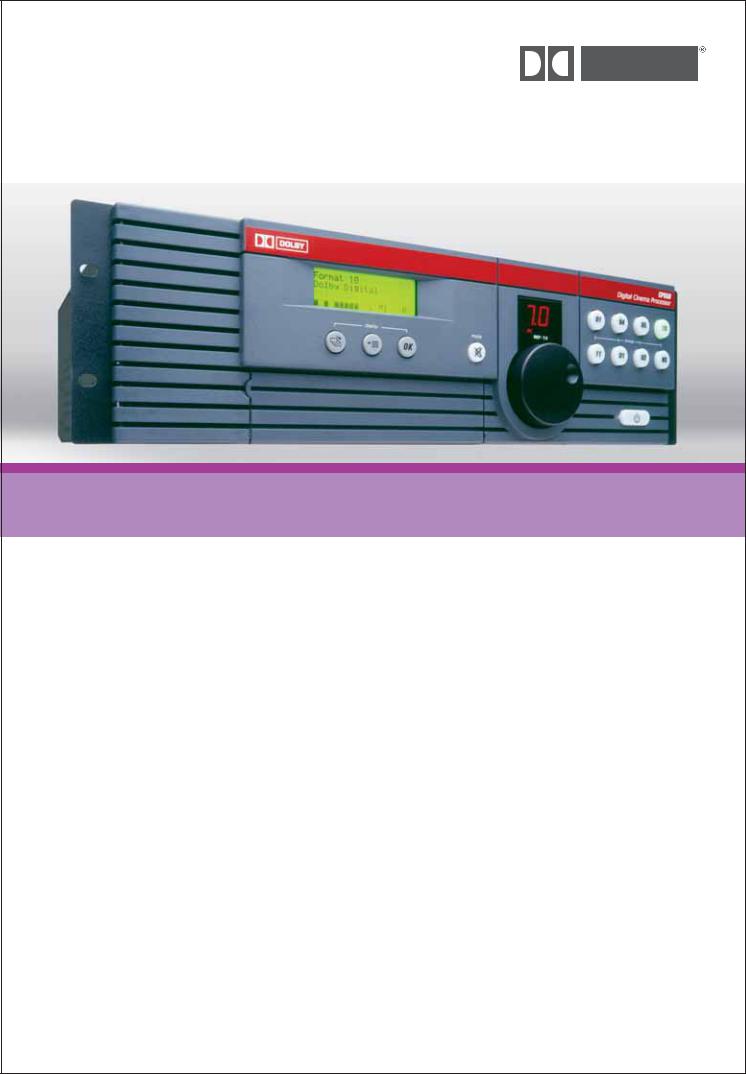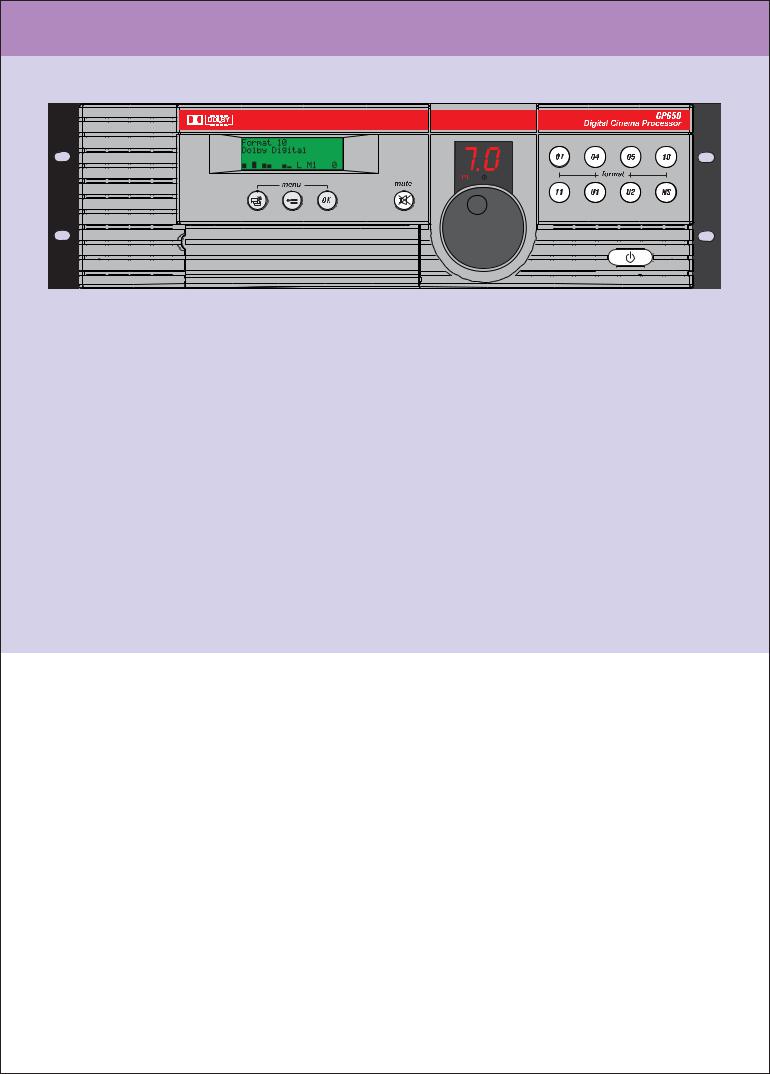Dolby Laboratories CP650 User Manual

CP650
Digital Cinema Processor
The Dolby CP650 is the best investment you can make in a cinema processor.
The Dolby® CP650 is the only all-digital cinema processor capable of playing back both digital and analogue Dolby soundtrack formats. Its high quality, proven reliability, unrivaled versatility, and ease of setup have earned it a place in thousands of flagship cinemas worldwide. It can also accommodate new technologies such as digital cinema, ensuring a long and useful product life.
Five Configurations
The CP650’s most popular configuration, simply designated CP650, processes Dolby SR and A-type analogue, Dolby Digital, and Dolby Digital Surround EX™ soundtracks. It also provides four AES3 inputs for digital cinema audio. To these features, the top-of-the-line CP650XO adds built-in crossovers for screen speakers, eliminating the need for a stand-alone crossover unit.
For tighter budgets, the CP650SR comes equipped to process Dolby SR and A-type analogue soundtracks only, while the CP650D adds Dolby Digital decoding; neither of these models includes Dolby Digital Surround EX decoding or digital audio inputs. However, as your needs change and new formats are introduced, you can upgrade any CP650 configuration with plug-in circuit cards and new software.
For digital cinema installations that do not require replay of film sound tracks, the CP650DC provides digital audio inputs for connection to a digital cinema server whilst removing the additional cost of 35mm support.
Exceptional Features
Built-in installation tools (including a real-time analyzer and the unique EQ Assist™ system) significantly reduce alignment time. In day-to-day operation, the Auditorium Assist™ feature can alert you to discrepancies from the sound system’s initial calibration, signaling a fault such as a speaker driver failure.
The CP650 is most efficiently installed and calibrated with the help of a laptop PC running comprehensive setup software (available in several languages). Calibration can also be accomplished using the CP650’s front-panel controls and main display. Software upgrades are conveniently accomplished from a PC.
A built-in Ethernet interface makes it possible to control and monitor the CP650 from a remote location – a head office hundreds of miles away from the cinema, for example.

Dolby CP650 Digital Cinema Processor
CP650 Front Panel
Setup Control Panel Access Door
Mic input level control Bypass output level control Test points
RS-232C port (9-pin female D-connector) for PC connection
9-pin female D-connector, balanced, for a microphone or microphone multiplexer; phantom power available
Main Display
Shows current format signal level and processor condition
Displays setup and calibration information for use with menu buttons
Menu Buttons
Steps through menu pages
Selects parameters within a page (use main fader knob for parameter choices)
Store settings
Mute Button
Mutes all audio outputs
Main Fader
Adjusts main audio output level
Fader Display
Shows fader setting, projector in use, bypass power supply condition
Format Buttons
Preprogrammed and user defined audio format control
Bypass Button
Selects main or bypass power supply
In the CP650DC, this acts as a power switch
Choosing Your CP650
The Dolby CP650 is available in a variety of configurations to suit every projection requirement.
In addition, upgrade kits are available that allow new configurations as needed:
UD/650 – Upgrades the CP650SR to CP650D (includes Cat. No. 773)
UEX/650 – Upgrades the CP650D to CP650 (includes Cat. No. 790)
UXO/650 – Upgrades the CP650 to CP650XO (includes Cat. No. 791)
|
CP650XO |
CP650 |
CP650D |
CP650SR |
CP650DC |
|
|
|
|
|
|
Dolby A-type analogue (2:4)* |
• |
• |
• |
• |
|
|
|
|
|
|
|
Dolby SR analogue (2:4) |
• |
• |
• |
• |
|
|
|
|
|
|
|
Dolby Digital, film sources |
• |
• |
• |
|
|
|
|
|
|
|
|
Dolby Digital, non-film sources |
• |
• |
|
|
• |
|
|
|
|
|
|
Surround EX decoding |
• |
• |
|
|
• |
|
|
|
|
|
|
Screen speaker crossovers |
• |
|
|
|
|
|
|
|
|
|
|
Le, Re support |
• |
|
|
|
|
|
|
|
|
|
|
Four AES3 inputs |
• |
• |
|
|
• |
(digital cinema audio) |
|
|
|||
|
|
|
|
|
|
|
|
|
|
|
|
*Four A-type processors provided for L, C, R, S on 70 mm mag prints (separate mag preamps required)
